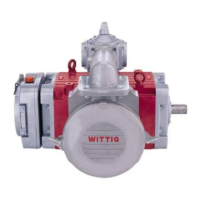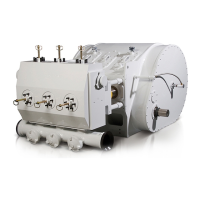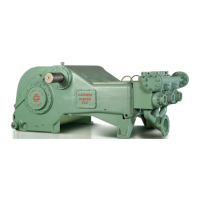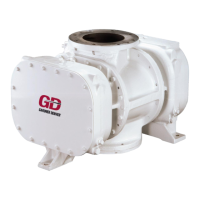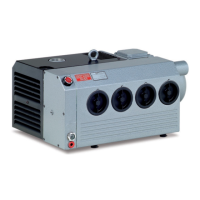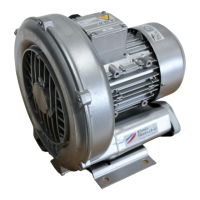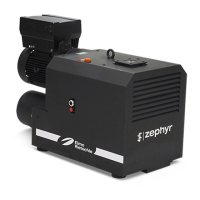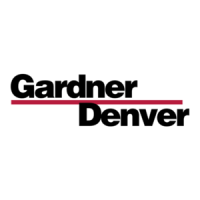
Do you have a question about the Gardner Denver Wittig RFW 260 DV and is the answer not in the manual?
| Brand | Gardner Denver |
|---|---|
| Model | Wittig RFW 260 DV |
| Category | Water Pump |
| Language | English |
Explains how rotary vane compressors/vacuum pumps work based on displacement principle.
Provides essential machine specifications and rating plate information for RFW series.
Details lubrication requirements, oil specifications (API, MIL-L), and oil tank capacity for the RFW series.
Specifies heat dissipation, required water pump capacity, and pipework dimensions for water cooling.
Defines the intended use of the compressor/vacuum pump and adherence to operating data.
Highlights safety symbols and emphasizes the importance of following marked instructions for personal safety.
Provides crucial safety guidelines and precautions for operating the machine, including maintenance and electrical work.
Details measures to prevent contamination, including suction pipe design and vacuum filter installation.
Describes the requirement for a non-lockable safety valve to prevent overpressure and its testing procedure.
Outlines the need for a forced-circulation cooling system and the installation of a thermometer in the water return.
Emphasizes taking sufficient time for initial operation and lists pre-operation checks for the machine.
Details oil type, filling level, and the necessity of manual pre-lubrication before initial startup or restart.
Lists permissible single-range oils and advises on viscosity adjustments for environmental temperatures.
Details checks for operating pressure/vacuum, compression temperature, condensate drain, rotation speed, cooling water, and oil level.
Explains the safety valve's function, setting safeguards, and weekly functional checks.
Describes the ventilation valve as a regulator and safety feature and outlines its weekly functionality check.
Lists common operating errors that can lead to machine failure, such as incorrect speed or poor cooling.
Provides a step-by-step procedure for rinsing the machine after it has sucked in liquids or mud.
Offers a troubleshooting guide with possible causes and eliminations for various malfunctions like low volume flow or abnormal noise.
Provides procedures for dealing with contamination from mud or liquid in the machine.
Addresses issues related to insufficient lubrication despite a full oil tank.
Emphasizes the importance of regular maintenance for operational reliability and lists maintenance intervals in a table.
Details how to inspect rotor vane height wear using a depth gauge and when replacement is necessary.

